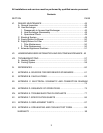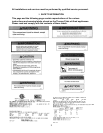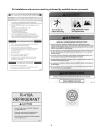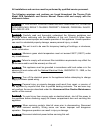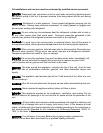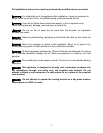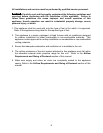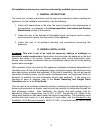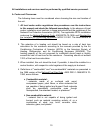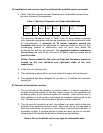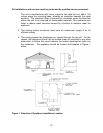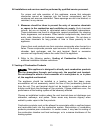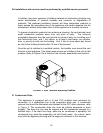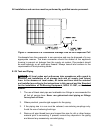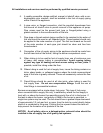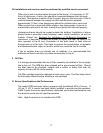
All installations and services must be performed by qualified service personnel.
A. Codes and Clearances:
The following items must be considered when choosing the size and location of
the unit.
1. All local codes and/or regulations take precedence over the instructions
in this manual and should be followed accordingly. In the absence of local
codes, installation must conform to these instructions and the guidelines of the
National Fire Protection Association (NFPA). Two applicable NFPA installation
codes are the National Electrical Code, ANSI/NFPA 70-1999, and Standard for
the Installation of Oil-Burning Equipment, NFPA 31-1997. The latest editions of
these codes should be consulted.
2. The selection of a heating unit should be based on a rate of heat loss
calculation for the residence according to the manuals provided by the Air
Conditioning Contractors of America (ACCA) or the American Society of
Heating, Refrigeration, and Air Conditioning Engineers (ASHRAE). The
heating capacity of the unit proposed for installation should meet or slightly
exceed the rate of heat loss for the residence. Oversizing should not exceed
125% of the heat loss calculation.
3. When installed, this unit should be level. If possible, it should be installed in a
central location, with respect to outlet registers of the supply air ductwork.
4. Definitions of "combustible" and "non-combustible" materials as presented in
the 1996 version of the National Fuel Gas Code, ANSI Z223.1-1996/NFPA 70-
1996, are as follows:
a. Combustible material:
“...materials made of or surfaced with wood,
compressed paper, plant fibers, or other materials that
are capable of being ignited and burned. Such materials
shall be considered combustible even though
flameproofed, fire-retardant treated, or plastered.”
b. Non-combustible material:
“...material that is not capable of being ignited and
burned; such as material consisting entirely of, or a
combination of, steel, iron, brick, concrete, slate,
asbestos, glass, and plaster.”
10



